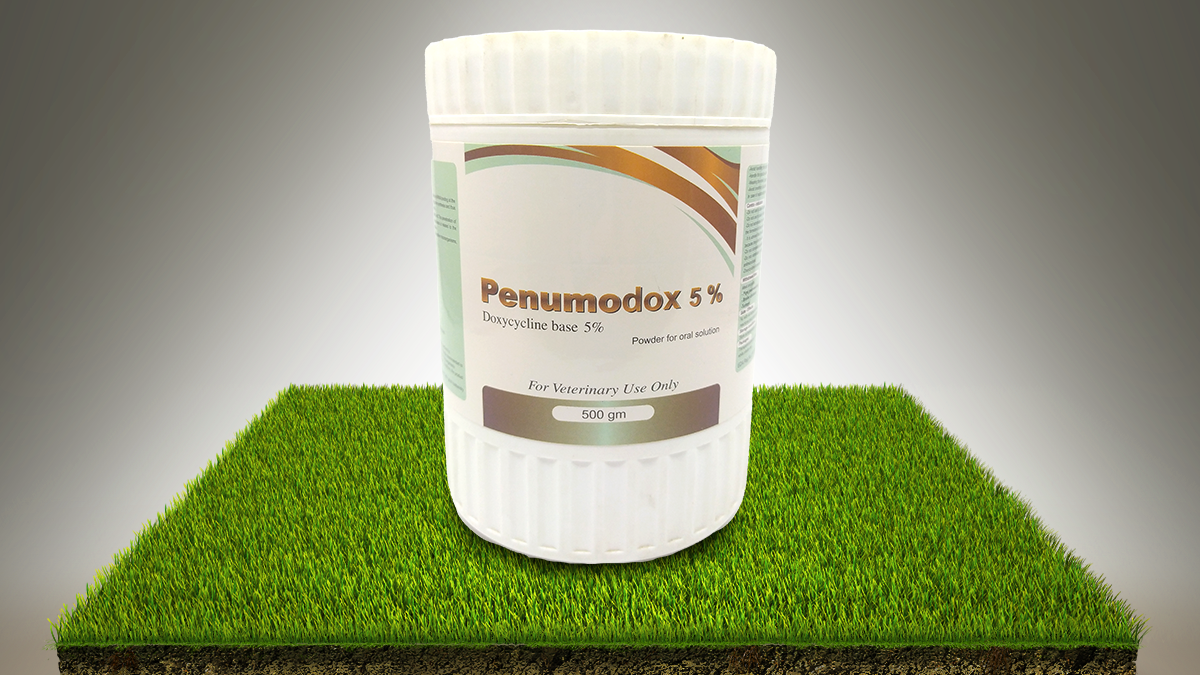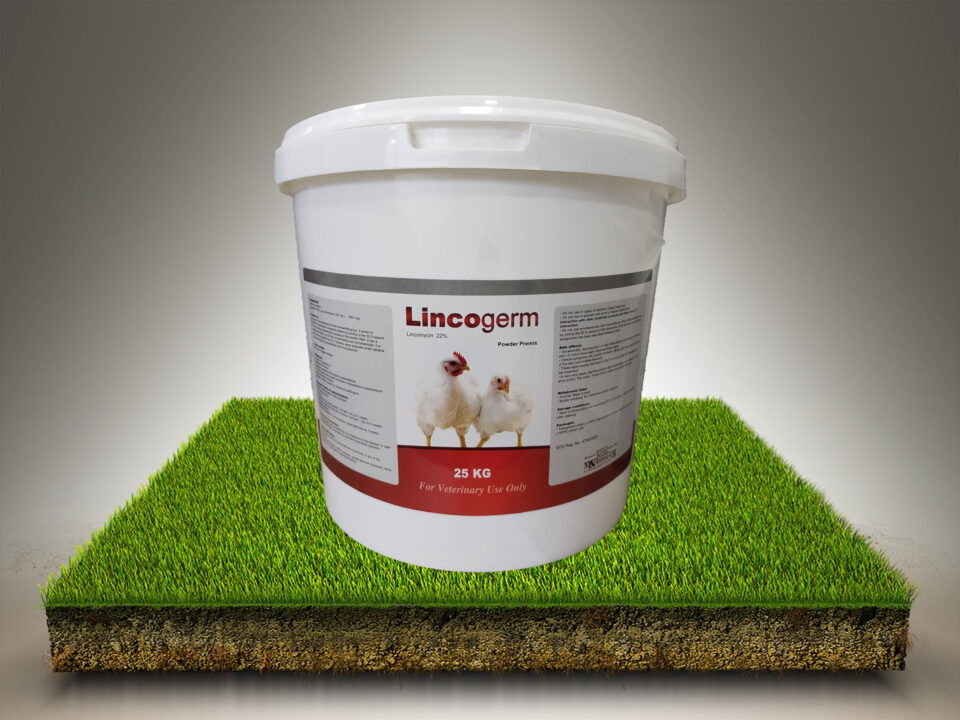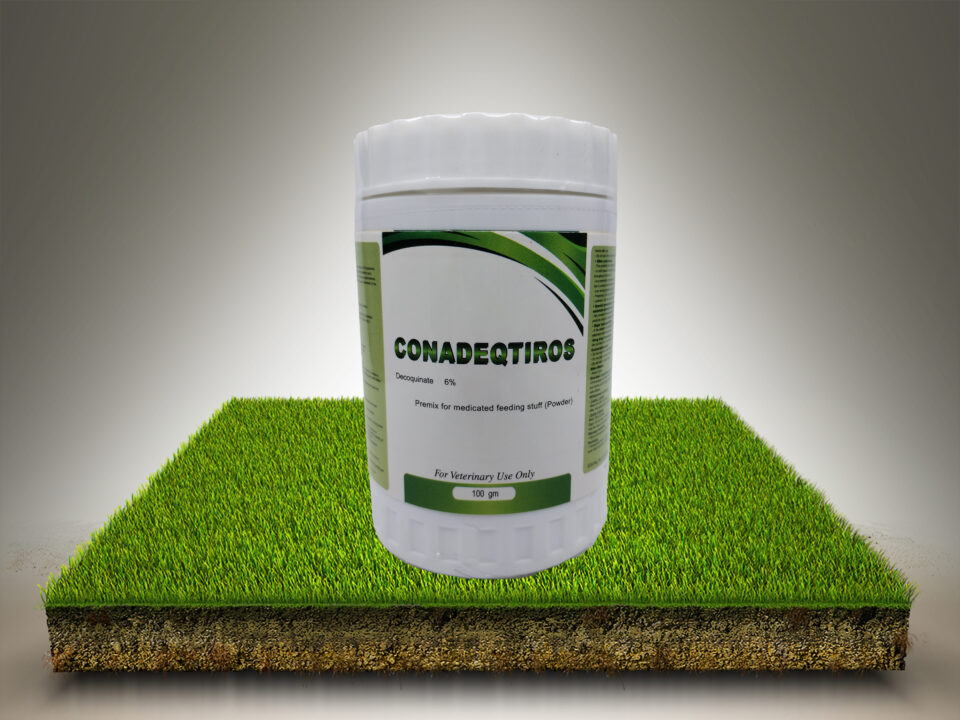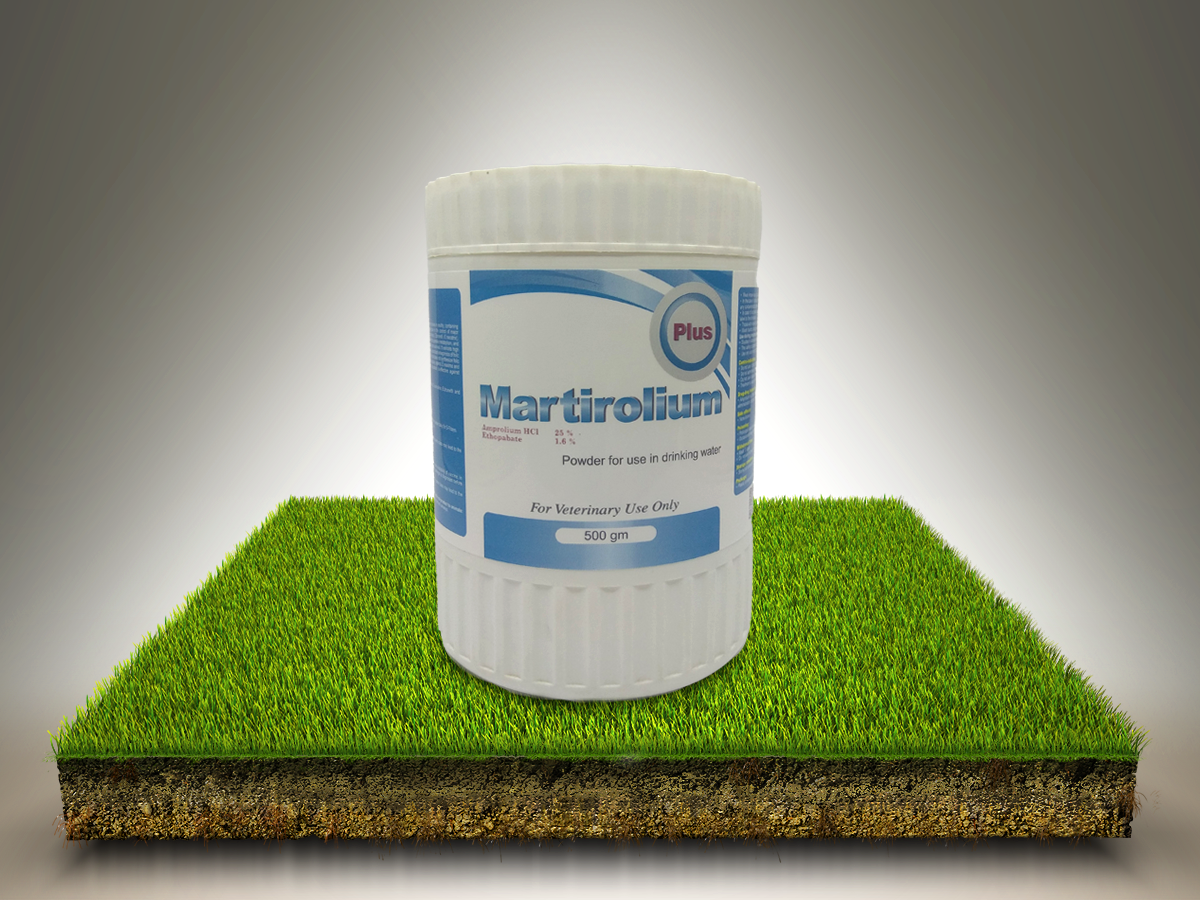
Martirolium Plus
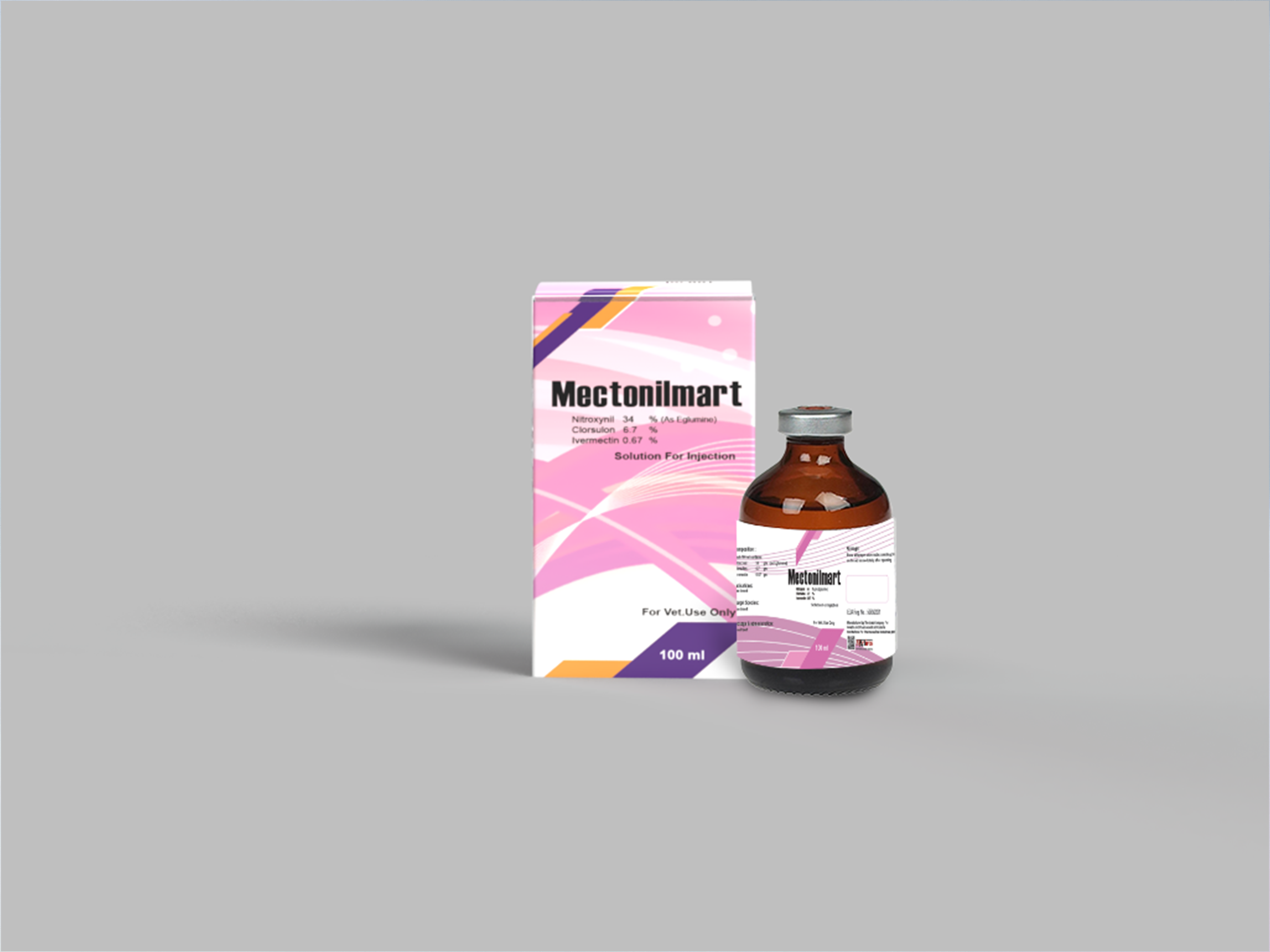
Mectonilmart
(W.S.P)
For Veterinary Use Only
Composition :
Each 1 gm contains:
Doxycycline( as Hyclate) 50 mg
Properties:
Doxycycline binds reversibly to the 30S ribosomal fraction receptors, leading to blocking of aminoacyl-tRNA binding at the corresponding site of the ribosome-messenger RNA complex. This results in an inhibition of the protein synthesis and thus a stop of the growth of the bacterial culture. Doxycycline has apredominantly bacteriostatic activity.
The bacteriostatic activity of Doxycycline involves penetration of the substance into the bacterial cell. The penetration of Doxycycline is exerted by both passive and active diffusion. The main mode of possible resistance is related to the possible presence of an R factor responsible for a decrease in the active transport of Doxycycline.
Doxycycline is a broad-spectrum antibiotic. It is primarily active against gram-positive and negative microorganisms, aerobic and anaerobic, as well as against mycoplasma, chlamidiae and Rickettsiae.
Indications:
Pigs: treatment of:
– Mycoplasma pneumonia caused by Mycoplasma hyopneumoniae
– Pasteurellosis caused by Pasteurella multocida
Broiler chickens and turkeys: treatment of
Chronic respiratory disease, Infectious sinusitis: caused by Mycoplasma gallisepticum .
Target Species:
Pigs (post-weaning), Broiler chickens and turkeys.
Dosage & administration:
– Route of administration: Orally in the drinking water.
For whole product:
– Pigs( post-weaning): 2 g of product/ 10 kg .b.wt./ day, for 3 to 5 consecutive days.
– Broiler chickens and turkeys: 2 g of product / 1 liter drinking water, daily for 3 to 5 consecutive days.
Warnings and precautions:
- This powder for oral solution is intended to be dissolved in milk or drinking water and can not be used as it is.
- Due to the variability (in time, geographical) of the susceptibility of bacteria to doxycycline, it is strongly recommended to carry out bacteriological samples on farms in sick animals and to carry out susceptibility testing of microorganisms. .
High levels of E. coli strains isolated in chickens resistant to tetracyclines have been described. Therefore, the product should be used for the treatment of E. coli infections only after a sensitivity test.
Since the eradication of target pathogens may not be possible, treatment should be associated with good husbandry practices, such as good hygiene, proper ventilation, and an absence of overcrowding. - Avoid handling this product in case of known allergy to Tetracyclines.
- Handle this product with the recommended precautions to avoid the risk of exposure:
- Wearing the mask, goggles and protective gloves is recommended when preparing the solution.
- Avoid breathing dust and avoid contact with skin and eyes.
In case of reaction after exposure to the product (rash for example), consult a doctor
Contra-indications
- Do not use in case of known allergy to Doxycycline or any other substance of the tetracycline group
- Do not use in case of known resistance to Tetracyclines.
- Do not administer concurrently with feed overloaded with polyvalent cations such as Ca+2, Mg+2, Zn+2 and Fe+3 because the formation of doxycycline complexes with these cations is possible.
- It is advised that the interval between administration of other products containing polyvalent cations should be 1-2 hours because they limit the absorption of tetracycline.
- Do not administer together with antacids, kaolin or iron preparations.
- Do not administer in conjunction with bactericidal antibiotics such as beta-lactames as tetracyclines are bacteriostatic antimicrobials.
- Doxycycline increases the action of anticoagulants.
Withdrawal periods:
Meat and offal:
– Pigs( post-weaning) : 6 days.
– Broiler chickens : 10 days
– Turkeys : 12 days
Side – Effects:
As with all tetracyclines, adverse effects have been noted such as gastrointestinalisturbances and less frequently allergic reactions and photosensitivity.
Storage condition:
Store at temperature not exceeding 30ºC in a dry place , and used immediately after opening and after reconstitution
Packaging:
Transparent plastic (LDPE) bag containing 100,250,500 and 1000 gm of the product in (HDPE) white plastic Jar with an outer label with (HDPE) white plastic cap

